First Shot Ceremony 2015 – Part I: True “Rosie” Rivets the Crowd
July 9, 2015
Civilian Marksmanship Program▸The First Shot▸First Shot Ceremony 2015 – Part I: True “Rosie” Rivets the Crowd
By Ashley Brugnone, CMP Writer
CAMP PERRY, Ohio – The 2015 National Trophy Matches are now officially underway as the Civilian Marksmanship Program’s (CMP) First Shot Ceremony kicks off another exciting season of friendly and expert competition. Though those in attendance were once again wowed by sensational special effects and visual performances, it was the quiet resilience of an extraordinary American hero that stole the show.
A perfectly sunny sky blanketed the historic Camp Perry ranges on the morning of July 6 as a crowd of dignitaries and eager guests awaited the opening of the matches at the Ohio National Guard facility for the 108th year.
A demonstration of Thunderbolt, a World War II (WWII) M4 Sherman Tank (of the Allen County Historical Society, Lima, Ohio), led a parade of military vehicles towards the crowd. Those in attendance watched as the powerful machines slowly moved down the gravel road towards them, unaware of the precious cargo it was protecting.
Carefully tucked within one of the military vehicles was real-life “Rosie the Riveter,” 91-year-old Minnie Bennett of Lorain, Ohio. During WWII, Minnie worked for three years in a steel plant – manufacturing materials for the battlefield in place of the men who could no longer work there because of their involvement in the war effort.
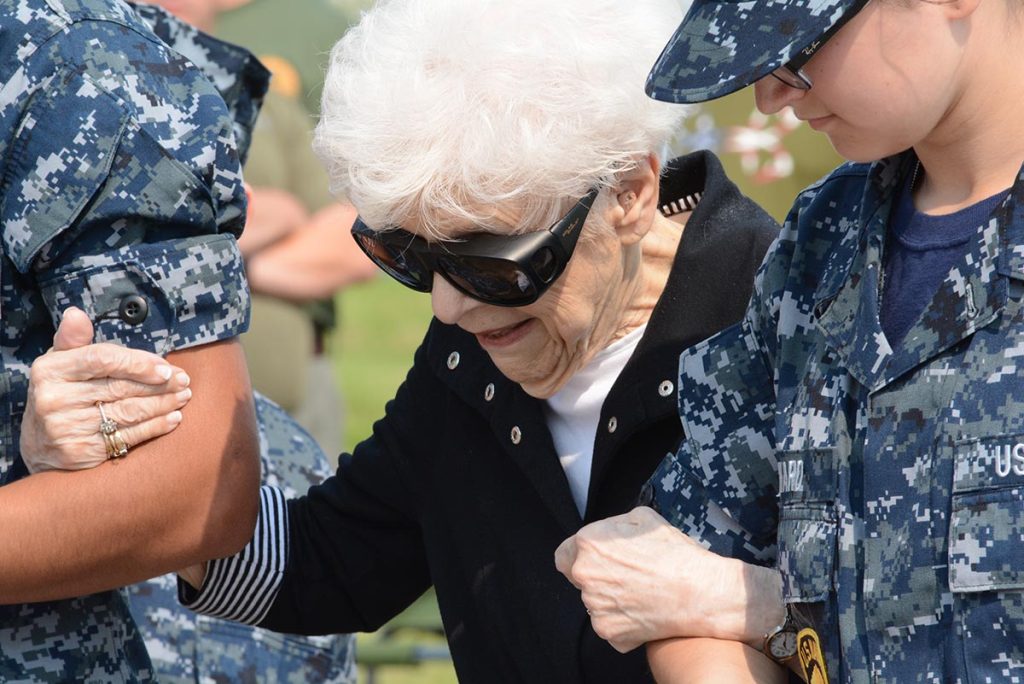
The “Rosie” character stood as a symbol of women’s strength in the workforce during WWII, to encourage them to join the war effort in their own way. Minnie was one of the brave women who decided to roll up her sleeves for her country.
“I think the most important thing is we supported the veterans. I said it then, and I’ll say it today – we were behind them,” she said. “That was the war, and we were there. We believed in it very, very much.”
She spoke of using War Bonds as a down payment on her first house, collecting stamps (which she still has in a cellophane envelope) for coffee and meat, and she also told stories of her husband and her four brothers who were in the service during the time.
“They were fighting to save our country and they were fighting for us,” she said. “We really supported them. They were giving their lives up for us.”
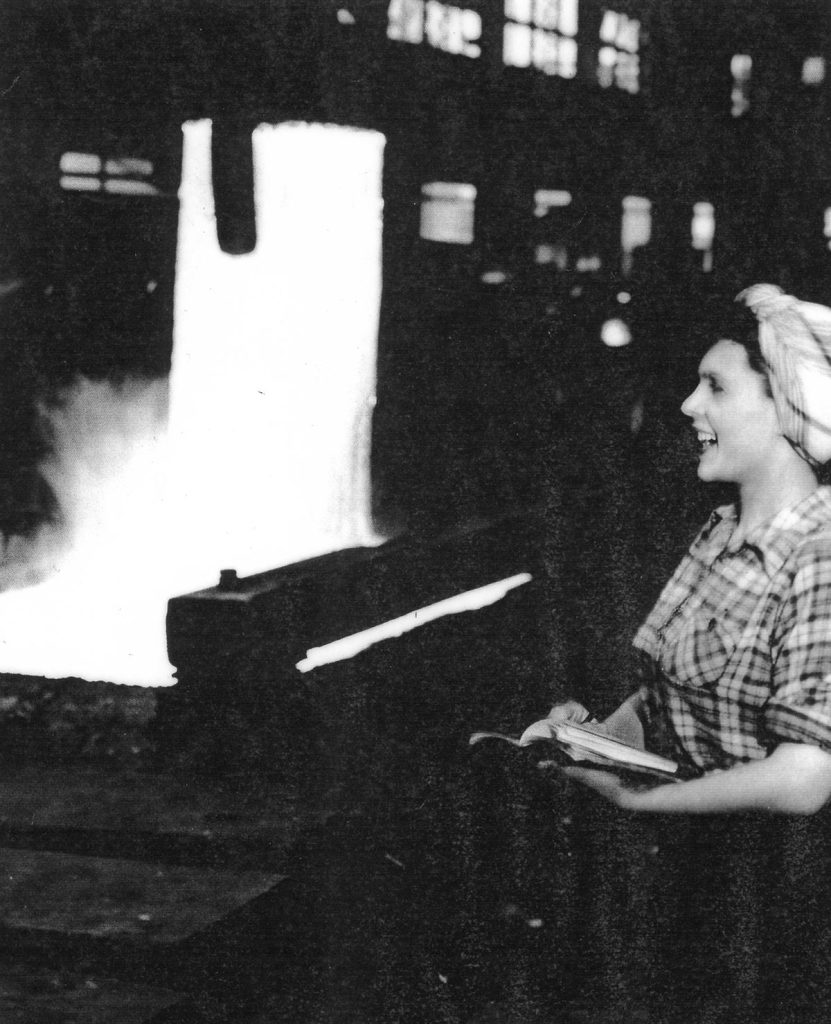
Women of the time were only able to work if they were 21 years of age. Minnie, at only 18, was too young to work, until too many men were being drafted with too few women to fill their spots in the workforce. It was then that the age was finally lowered to 18, and Minnie could become involved.
“I did it, and I was happy to do it, even though I didn’t know what I was doing,” she joked. “But the men helped.”
Generations later, being asked to appear at the First Shot Ceremony to represent all of the women who sacrificed their lives on the home front during the war was something that surprised Minnie and deeply touched her.
“It was an honor. I laughed and I cried,” she said. “I couldn’t believe it. It brought back so many good memories of that time.”
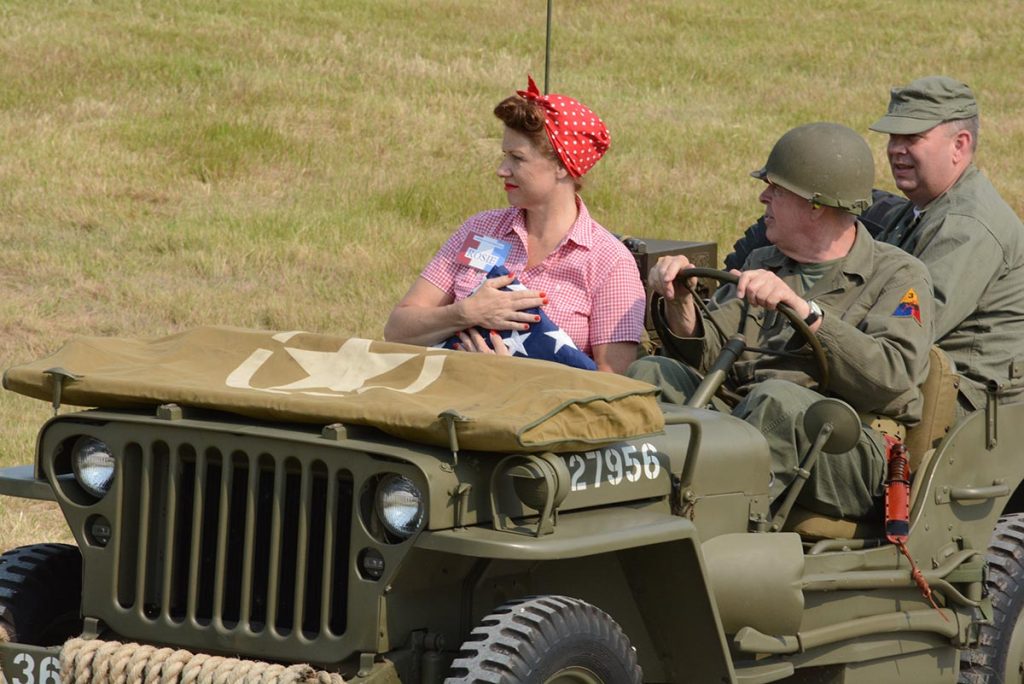
When the First Shot Ceremony commenced, a cluster of fans formed around Minnie – shaking her hand and asking for photos as they thanked her for her assistance towards her country. She posed for every picture and gladly grasped every hand.
One Marine took a knee next to Minnie, who was sitting on the bottom bench of the grandstands, and thanked her for her service. She proudly told him stories of her time working in the plant, and she intently listened to the Marine describe his experiences in Iraq and his young family. As the man slightly paused in a moment of emotion during his story, Minnie put out her hand – proving that even 70 years after her work during WWII, she would do anything to help a soldier in need.
Minnie was accompanied by her husband of 72 years, Bruno Bennett. Bruno is a WWII veteran, having served in the U.S. Marine Corps in the South Pacific. Other honored WWII veterans present during the ceremony included Joe De Luca, Jr., who served as an Honor Guard for General George S. Patton when he laid in state in Heidleberg, Germany, and Lloyd Boyer, who served in Field Artillery in General Patton’s Third Army.
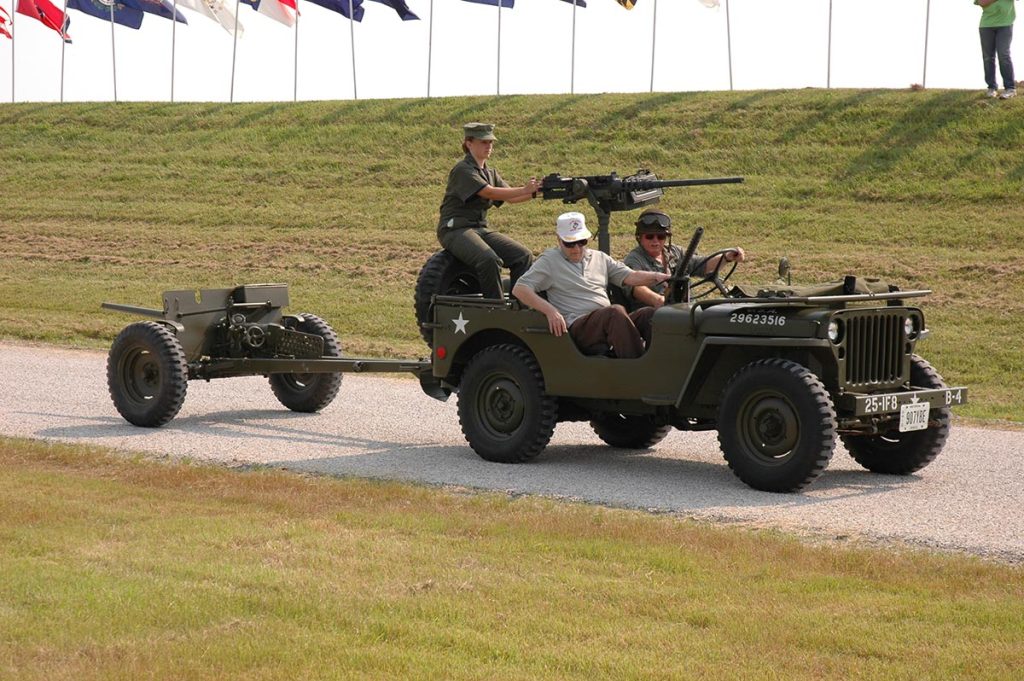
Also representing the strong women of WWII was “Rosie the Riveter” reenactor Dawn Rumbutis. A member of the Firelands Military Vehicle Group, the ceremony was the first event she decided to take on the role of Rosie. The only one within the group without any real military experience, she felt she needed to come up with a way to revere the era outside of a uniform.
“I felt for me, as a civilian, it wasn’t as honoring to reenact as an enlisted officer because I’ve never been involved in it,” she explained. “So this (Rosie) was my choice.”
After Dawn and the real “Rosie” met, Minnie began pouring out stories of when she worked in the steel mill, and Dawn couldn’t have been more fascinated by them all.
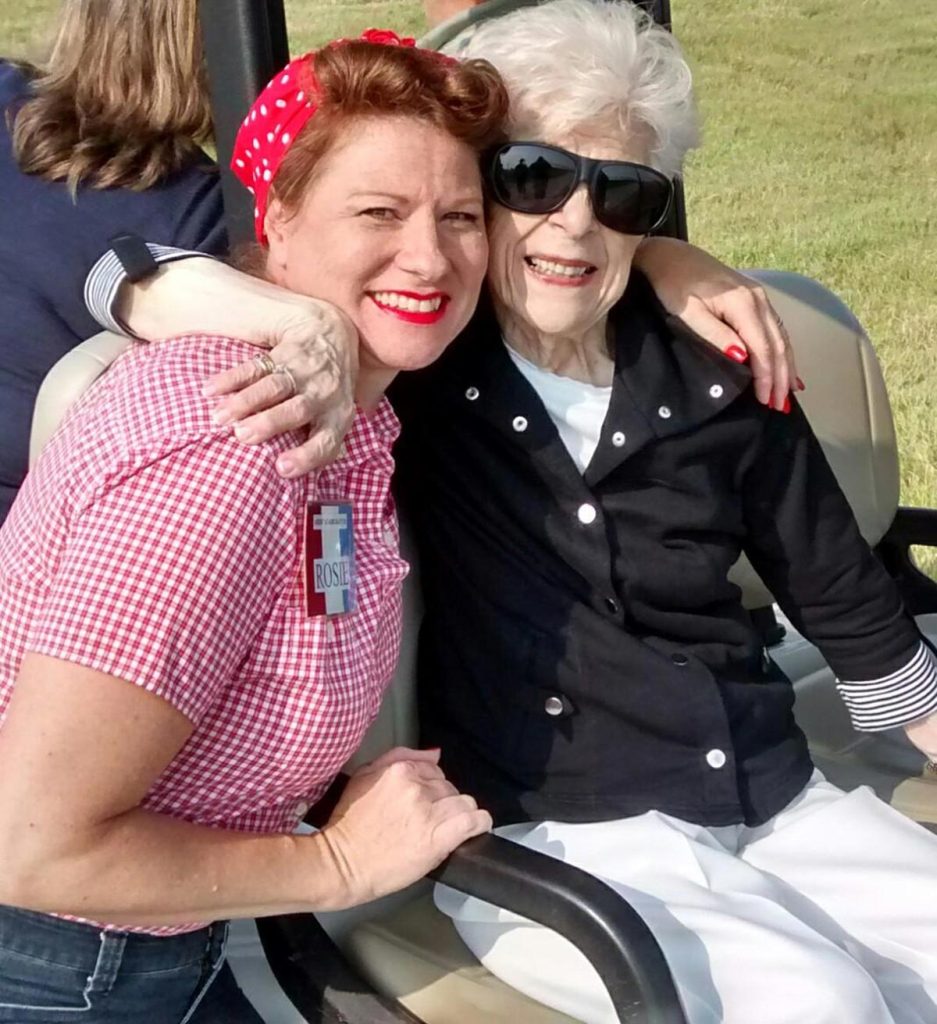
“It really brought things to life. Because I never lived it, to meet people who actually did it – it makes it more real,” Dawn explained. “[The war and women entering the workforce] did happen, and it changed a lot of people’s lives.”
During the ceremony, Minnie and Dawn were escorted to the stands by the military vehicle parade to deliver the colors to the 555th Honors Detachment of Wooster, Ohio. The 555th then solemnly raised the flag that will watch over the ranges through the duration of the matches.
Read about the rest of the First Shot Ceremony events in Part II: Vietnam Vet Receives Medals More Than 40 Years After Battle.
For photos of the First Shot Ceremony, visit http://cmp1.zenfolio.com.
What a beautiful and inspiring story. Thank you for involving this great woman in your event!
My Mother worked on those B24’s at Hughes Aircraft in Tucson, AZ during the war!
The “Rosie the Riveter” recognition was a great inclusion for those who worked in the civilian forces needed for the war effort.
My mother never mentioned her part, but after she passed away in 2005 at 87 years of age, we found a certificate from the war department thanking her for her work in the Manhattan Project. She never mentioned this work, she served and we should never forget those that work to support and defend the country even though they may be civilians.